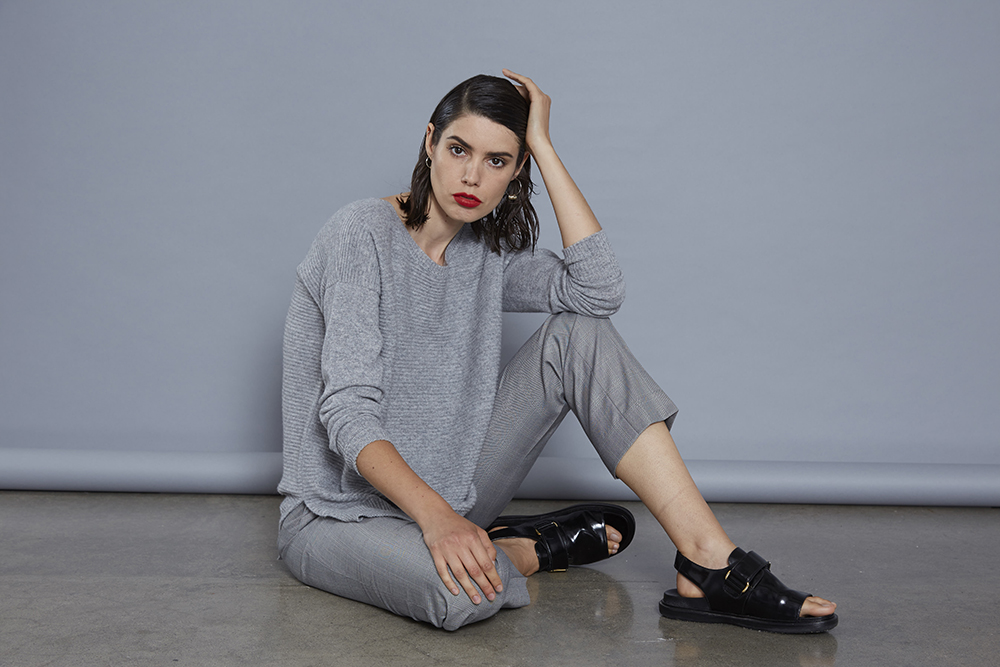As the cold weather comes in and winter descends upon us, fashion retailers prepare to stock for new consumer needs. Winter means we can begin bundling up in warm, slouchy and oversized pieces of cottons, fleeces, furs and wools.
Cashmere often gets a bad wrap. As a very luxurious fabric, sourced both nationally and internationally, it can be very expensive. But why is it so expensive?
Cashmere was first introduced in 15th-century Persia, where fashion items were made for royal guests to display their high status in power. So you could arguably say cashmere is for royalty or for the high-end. But much more goes into cashmere to explain its luxurious nature than just a royal past.
We can find differences in companies that source their cashmere in New Zealand, and companies that source their cashmere from Australia, Asia, or Europe.
Talking to Trish from Tolaga Bay Cashmere Company, who has over 35 years of knowledge and experience in the cashmere industry, Verve is given an inside view on farming cashmere goats and the manufacturing process.

Tolaga Bay Cashmere Company, located in Eastland, keeps the company within its New Zealand roots, producing soft-to-the-touch cashmere obtained from over 30 years of genetically breeding the “finest cashmere” from their own herd of cashmere goats. As fashion-focused and conscious consumers, the fact that this company sources its cashmere locally, is very attractive to New Zealanders, who pay more for products that have a New Zealand price tag on it, even when those tags display hefty prices ranging from $600-1,000.
But the New Zealand image of their company isn’t the only reason for cashmere being so expensive, “it is a case of supply and demand,” Trish states. Producing cashmere is an extensive process and it takes more than one goat to produce a single garment. Price usually depends on the labour undertaken during the manufacturing process, and because the fur gathered is from the winter undercoat of the animal when they also have a protective top coat, farmers need to separate them, combing and sorting the hairs and fibres by hand! Due to the soft and slippery nature of the fibre, it also makes it difficult to spin and work with to make an actual garment. It is a very labour intensive, highly involved and lengthy process. So when you wear a cashmere piece, you know a lot of hard work and effort went into making it by dedicated and skilled hands.
Whereas, other New Zealand companies, for example, The Cashmere Company, source from Scotland, and other retailers source their cashmere from elsewhere in the world, most of these companies have equally expensive prices for their cashmere items, depending on the quality.
Obtained from the undercoat hair of the cashmere goat, quality of garments depends on whether the fibres are combed or sheared out, the grade, weight and extra detailing. Companies utilise the ‘100% cashmere’ tag, but fail to state what grade their cashmere is. Although “100% cashmere” may sound ideal, there is a big difference, The Cashmere Company states “cheap cashmere jumpers exist because some retailers are happy to compromise on quality”. So if you are super fussy and want the very best cashmere, you must obtain Grade A, 100% cashmere.
If you think cashmere is hard to obtain and expensive, meet vicuna. Worn by Inca royalty and considered the rarest fibre in the world, a vicuna jacket can cost up to $21,000. Once a near extinct species, this fibre is obtained from the vicuna animal, a cousin of the llama, living exclusively in the high plateaus of the Andes in South America. Remarkably even softer than cashmere, vicuna also suffers from the same supply and demand problem as cashmere. Paul Falke from luxury line FALKE states, “The demand for them is high, but as the yarn is so rare and exclusive we can only produce a small number a year, which is what true luxury is all about.”
With winter upon us, it is worthy to explore these highly sophisticated and sought after materials ‘worth more than gold’ as high-rollers prepare to bundle up in fashionable, long-lasting and one of-a-kind clothing and accessories, equivalent to royalty.
Words: Rangimarie Elvin
Images are from Tolaga Bay Cashmere Company.








